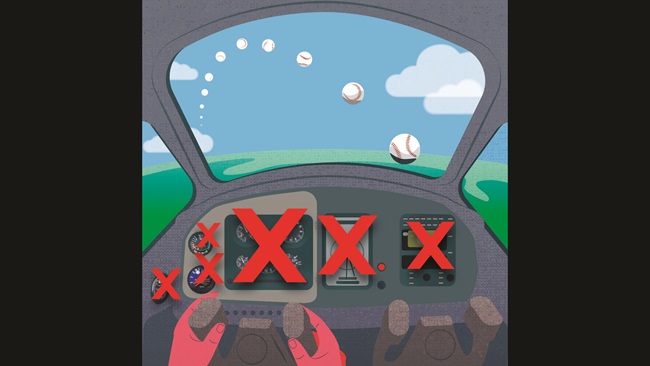What’s an unusual feature of an instrument approach procedure in your aviation neighborhood—some quirk of design that makes you glad you can practice it at will?
One approach may require you to identify a key fix with multiple nav systems. Another might use the DME from a VOR for an initial phase, and then switch to localizer DME for the final approach.
In rough country, DME arcs (of at least a seven-mile radius) are common routings onto approach courses. There are approaches that change course after passing the final approach fix.
Now and then an IAP leaves you slightly short of your destination; its plate may contain a note like this: "Fly visual 097 degrees 1.5 NM."
If those last three examples seem a bit much for achieving the goal of a stable approach, think about the focus required of the pilot when all three appear in one procedure. That level of complication (and snow) were too much for the crew of a Beech C99 twin, who overlooked one key step.
In the mountainous terrain around Butte, Mont., the VOR or GPS-B approach to Bert Mooney Airport employs a 7-DME arc at 9,000 feet msl to position the aircraft inbound on the 127-degree course (that is, the 307-degree radial) toward the Coppertown VOR.
After passing the VOR, the aircraft, at 7,700 feet, must turn to intercept the 097-degree radial and track it 10 nm to MAXCA, descending to circling minimums of 6,900 feet. From MAXCA to the 5,545-foot-elevation airport is a 1.5 nm leg, flown visually.
On March 28, 2006, the Beech 99 cargo and new-hire training flight "collided with mountainous terrain in controlled flight" while executing the approach.. "The location of the wreckage and the 127 degree heading on the HSI indicate that the pilots failed to follow the approach procedure and turn to a heading of 097 degrees," said the National Transportation Safety Board after an investigation.
Can you think of another characteristic of this approach (and many others) that raised the risk profile?
You won’t see it noted directly on the chart. But the accident summary reported that soon after the flight was cleared for the approach, radar contact was lost--and with it went a chance that the navigation error might be observed by aviation’s proverbial second pair of eyes.



